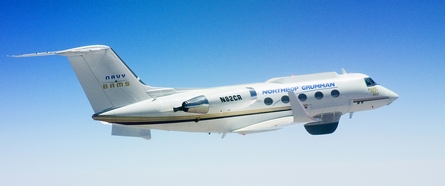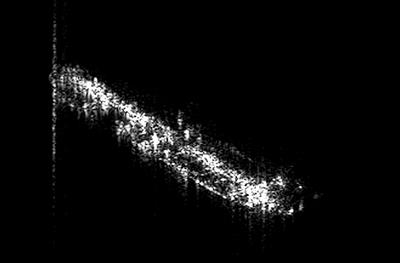Northrop Grumman is finishing up flights of a Gulfstream II testbed under the company-funded Head Start risk-reduction programme intended to boost its chances of winning the US Navy Broad Area Maritime Surveillance (BAMS) contest.
A BAMS decision is expected by October, with Northrop's RQ-4N Global Hawk unmanned air system competing against Boeing's Gulfstream G550 derivative and the Lockheed Martin/General Atomics Mariner UAS.
"Head Start will allow us to get through system development and demonstration and to initial operational capability faster than any one else," says programme manager Bill Beck. BAMS IOC is planned for 2013-14.

Northrop's Gulfstream II BAMS testbed
The programme has demonstrated the airframe, payload and system changes from the US Air Force's RQ-4 Block 20 Global Hawk to meet the BAMS requirement. Head Start also includes long-lead funding for the first two development air vehicles, one of which will be a company-owned test asset.
Marinisation of the Global Hawk airframe for BAMS includes beefing up the composite wing and adding electro-expulsive de-icing of the leading edges to allow the UAV to descend through weather to identify ship targets. Birdstrike testing of the new Ka/X-band satcom antenna and structural testing with underwing payloads have also been performed.
"We have put the wing on long lead at our risk and are funding one of the SDD aircraft to get two vehicles into Lot 7 Global Hawk production so the BAMS test programme can be as aggressive as possible," says Beck. The company-owned air vehicle would be used for development testing beginning in 2009 in support of two US Navy-funded SDD aircraft.
Head Start includes flight testing of Northrop's Night Hunter II electro-optical/infrared sensor on a Beech King Air, with high-altitude tests in a NASA Martin WB-57, and a network and payload demonstration using the GII equipped with a prototype of Northrop's MFAS active-array radar and the communications architecture planned for BAMS.

Inverse-SAR ship image from Northrop's MFAS prototype
With electronic scanning in azimuth and elevation plus 360° mechanical scanning, MFAS functions include synthetic-aperture radar mapping and inverse SAR imaging of ship targets. The GII is also equipped with dual CDL broadband datalinks controlled by a prototype of the advanced mission management system planned for the RQ-4N.

Synthetic-aperture radar image from MFAS
The modified GII had competed some 18 flights off Los Angeles by the end of August, gathering radar data and demonstrating Northrop's Internet-based networking concept by exchanging data with a prototype of the open-architecture BAMS mission control system located near the US Navy's Patuxent River, Maryland test centre.
Source: Flight International























